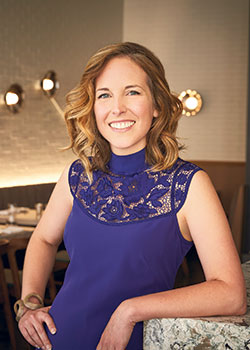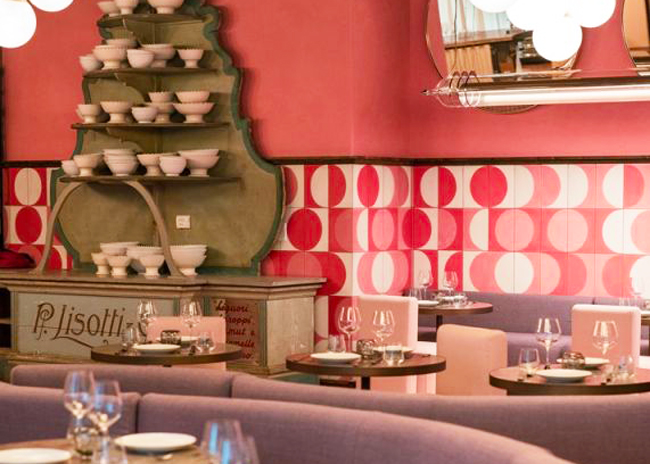Design Insights on Tossed's new "green" prototype.
Read our full article on Tossed's new "green" prototype.
Materials.
A lot of the manufacturers that are providing raw materials being applied in commercial environments are cognizant of the fact that the industry has started to move in the direction of green and environmental and sustainable.
They're making raw materials more affordable all the time, which benefits the designer coming up with the concept, the fabricator who's able to fabricate it at a reasonable cost and the restaurant brand that would like to offer it to their own customers. So as the movement increases and gains more traction, everyone's going to start to benefit from both an availability and cost perspective.
Challenge.
In the new Boston space, it was the challenge of laying out a restaurant that flows well in an existing oddly-shaped space and designing it so that within the first few seconds the customer gets a positive impression. That impression also has to stand the test of time in a high-volume business. You don't want to just put something in that looks pretty but is going to fail in a year or two. You want this dining room to last for several years so that customers on day one and in year seven are going to have that same dining experience.
Cool Feature.
There are certain design features that Tossed now considers brand triggers. One of those is what we call the oval clouds, which are suspended from the ceiling in a unit in downtown Los Angeles, the first generation of the new prototype. Many elements from L.A. were carried over and enhanced in the new Boston prototype. The "clouds" help to connect the ceiling to the seating below and to define that particular zone as a separate seating area. They have the three brand-centric colors from the Tossed logo incorporated, so they bring color to the space in a small, subtle way. They're among the more expensive design elements, but are a signature that will carry forward.
Advice.
Every restaurant chain approaches design slightly differently, but it's important for any operator looking to go down the path of environmentally friendly design or finishes to consult with an expert. It's not just about picking finishes that are eco-friendly or renewable, it's about ensuring that they're available, cost effective and will stand the test of time in a commercial restaurant environment. You have to have that marriage between vision and application. If a particular material is a limited-time offering, or for whatever reason isn't likely to be available on a consistent or a long-term basis to the people doing the fabricating, you need to know that. A lot of companies sell design and design new environmentally friendly spaces but may or may not take the steps of determining whether the materials that they select or specify are consistently available, what the short- and long-term costs will be, or, if costs are outlandish, provide value-engineered alternatives that are scalable for growth. That type of consultation is important to get upfront because for most companies this is new and rapidly changing territory.




